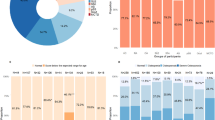Abstract
Gorham-Stout Syndrome (GSS) is an infrequent and mysterious bone disease characterized by massive bone dissolving or even disappearing due to an unknown pathogeny. It is quite different from the Itai-itai disease and osteoporosis. In 2001, an 8-year-old boy from a small town in Xinjiang was found to get GSS disease. Some parts of his bones vanished without any external force. Results showed that the concentrations of Cd and Cu, especially Na and K in his hair were far higher than those of the healthy people, and the concentration of Cd was 2 times that of the reference while those of Cr and Zn were insufficient for health. The ratio of K/Na was also higher than that of healthy group. Four different ratios revealed weak bone growth potential and strong bone breakage occurred simultaneously in the GSS sufferer’s skeletal system. It might be the synergistic effect of the trace elements leading to the baffling syndrome. Further investigation demonstrated that the trace elements can cause a series of diseases, including GSS disease and a typical rheumatoid arthritis (ARA). Epidemiological investigation also proved that there were about 25% of the inhabitants in the town suffered from an ARA. All of these data implied there was significant relationship among Gorham-Stout Syndrome, ARA and prolapse of lumbar intervertebral disc.
Similar content being viewed by others
References
Jackson J B S. A Bornless Arm. Boston Med Surg, 1838, 18: 368
Gorham L, Stout A. Massive osteolysis (acute spontaneous absorption of bone, phantom bone, disappearing bone): Its relation to hae-mangiomatosis. Bone Joint Surg, 1955, 37: 985–1004
Li J X, Wu G J. Atlas of The Ecological Environmental Geochemistry of China. Beijing: Geological Publishing House, 1999
Yan C, Liu H Y. Mensurations and analysis of 5 trace elements in children hair of Wei, Han, Ke in Xinjiang. Public Sanitation in China (in Chinese), 1997, 13(10): 614–615
Dong G Q, Cai X X. Comparisons of hair zinc, copper, lead, cadmium values among the children on different age stages. Science Trace Elements in Guangdong (in Chinese), 1999, 6(4): 31–33
Xiao R X, Zheng X Y. Mensuration of trace elements in children hair in Xinjiang. Journal of Prepotency and Inheritance in China (in Chinese), 1996, 4(6): 30
Liu H, Ma Y M, He Z Y, et al. The relationship of hair’s trace elements and geochemical environment. J East China Jiaotong Uni (in Chinese), 2000, 17(3): 63–67
Guo Y, Huang W, He H Y, et al. The Relationship of hair’s trace elements and dental caries. Journal of Clin Stomatol (in Chinese), 1996, 12(4): 202–203
Fei Y Q, Deng K P, Zhang M H, et al. Analysis of content of trace elements in hair of children in Yangjiang City. Science of Trace Elements in Guangdong (in Chinese), 2000, 7(6): 32–35
Ma W, Xue SH, Wu W L, et al. The establishment of reference value of trance elements in hair at different ages in Wuhan region. Journal of Prepotency and Inheritance in China (in Chinese), 2002, 18(1): 128
Author information
Authors and Affiliations
Corresponding author
About this article
Cite this article
Chen, M., Cao, X., Mayouma, L. et al. Trace element characteristics of a Gorham-Stout Syndrome sufferer. Chin. Sci. Bull. 53, 1388–1392 (2008). https://doi.org/10.1007/s11434-008-0213-9
Received:
Accepted:
Published:
Issue Date:
DOI: https://doi.org/10.1007/s11434-008-0213-9




